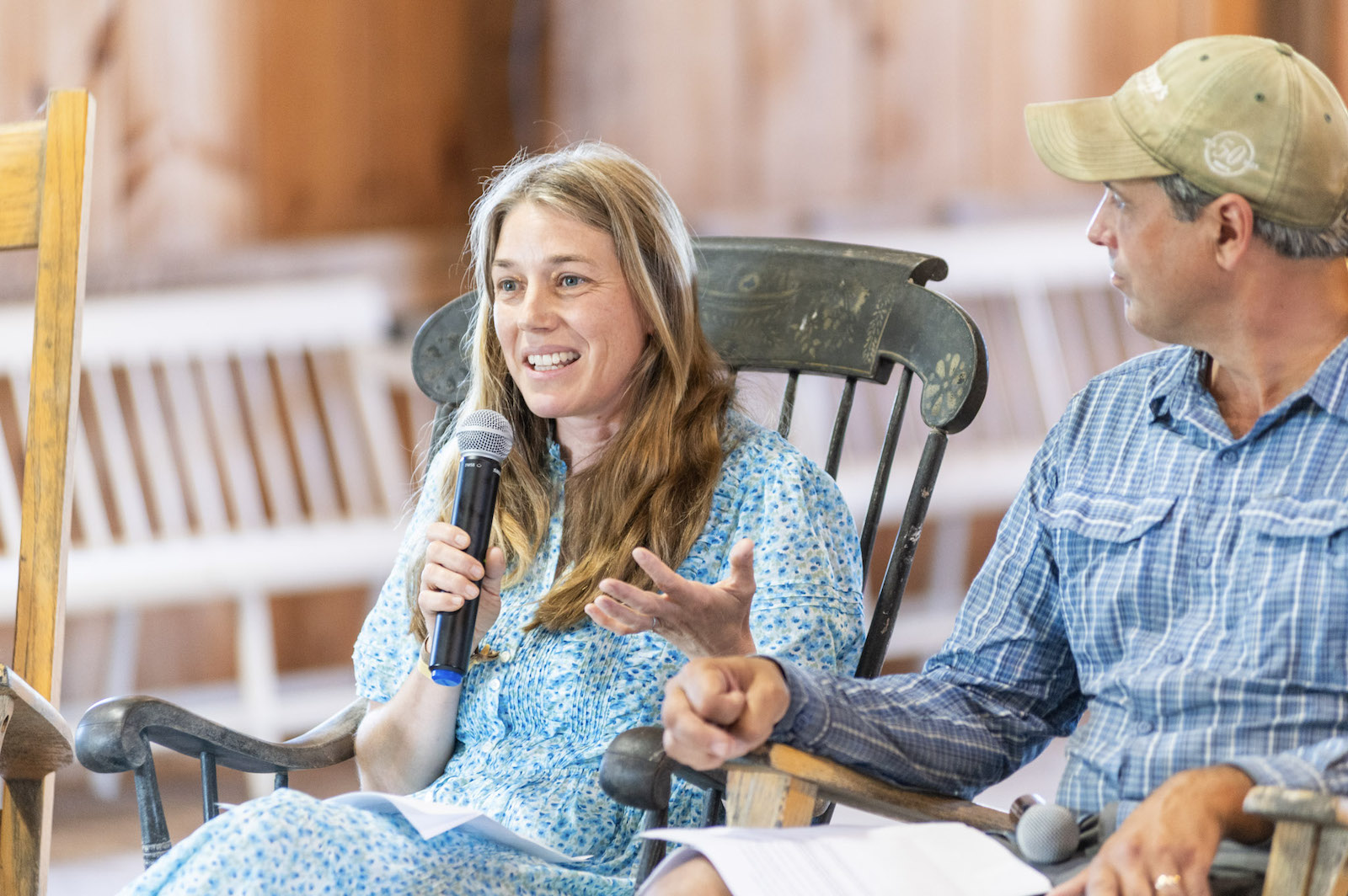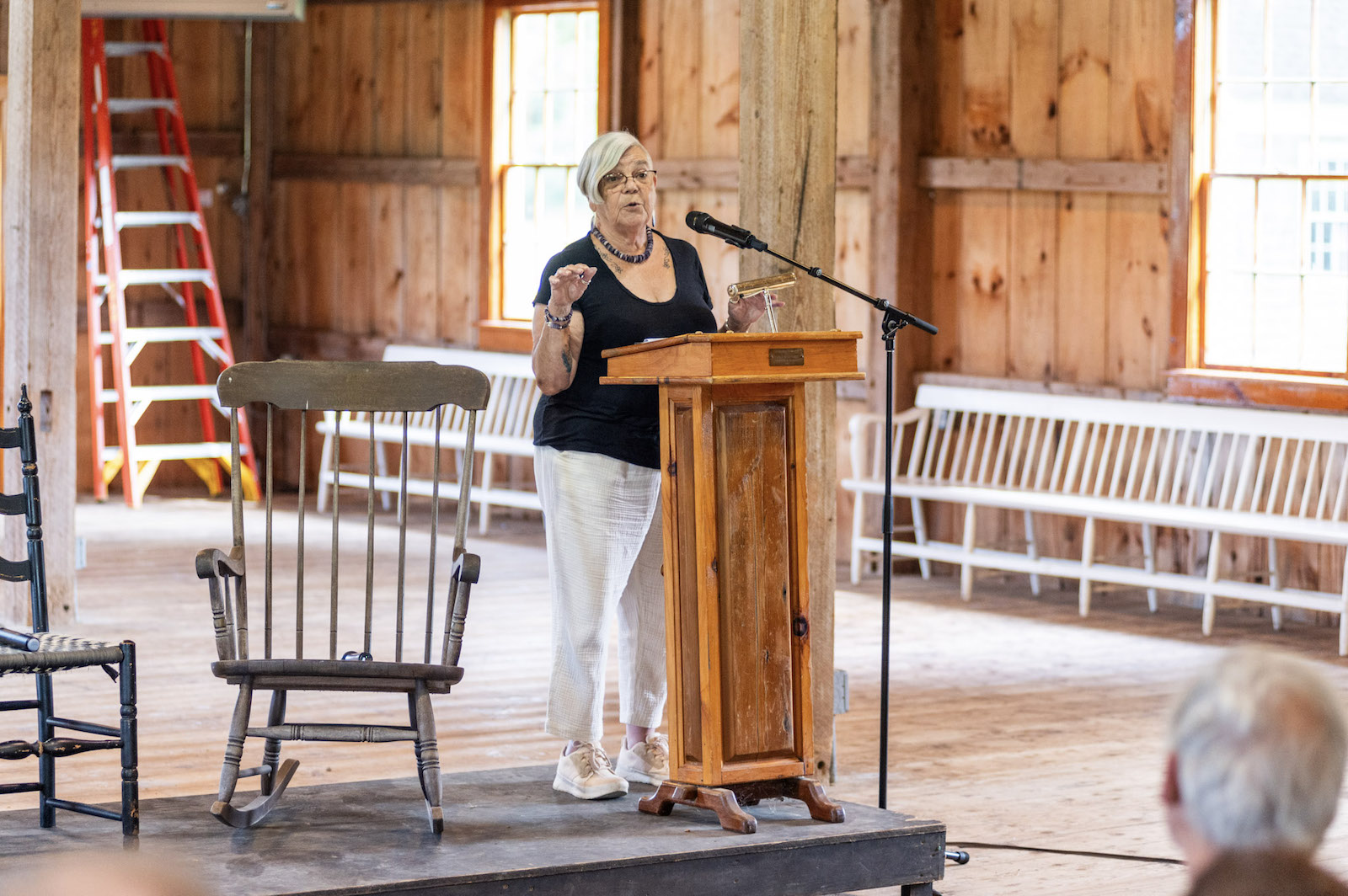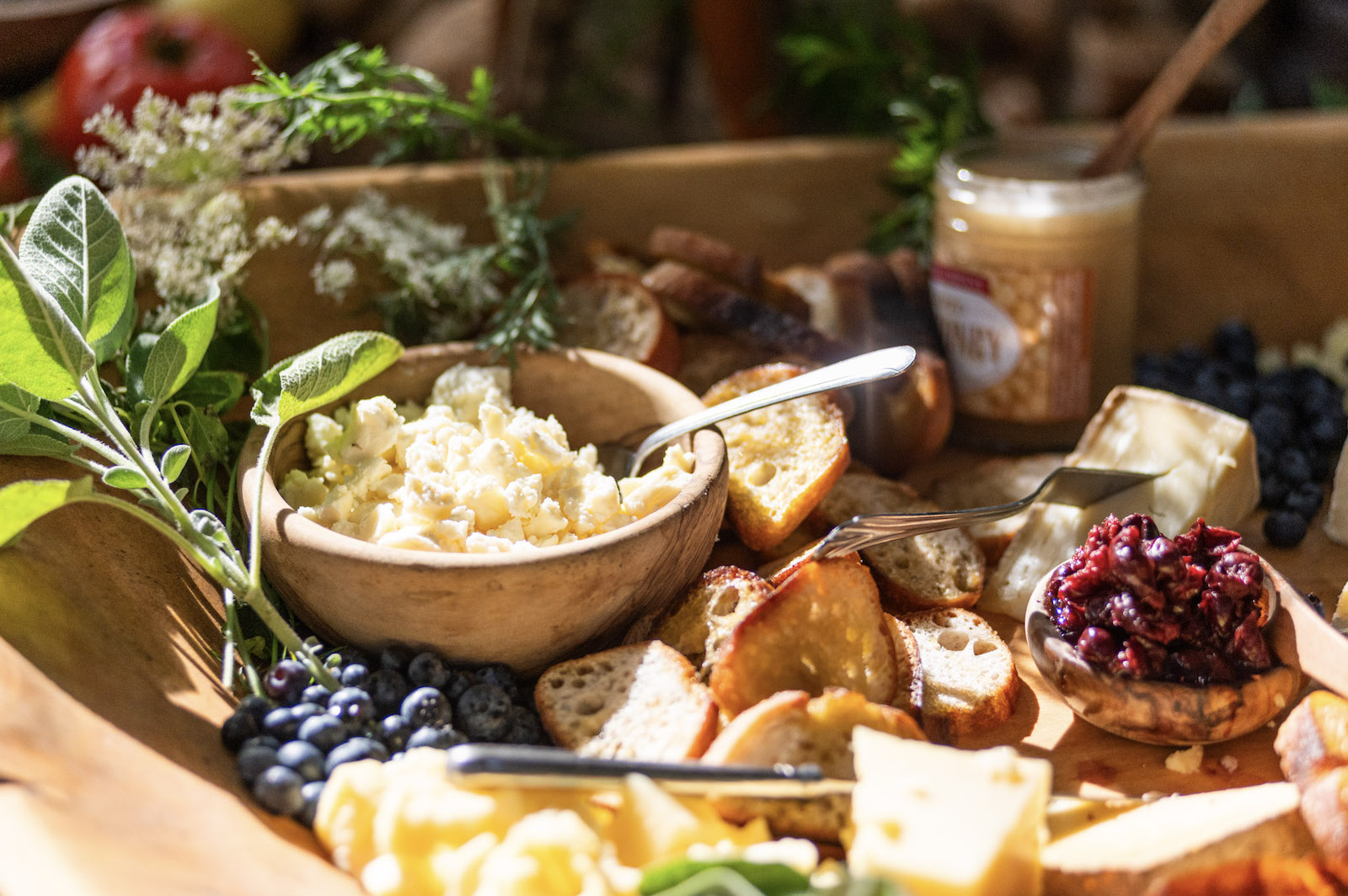Kristina Hook, tribal elder for the Aquinnah Wampanoag Tribe, said that after spending a few years away from the Vineyard, her mother warned her that she would cry upon returning home in 1999.
When she returned, Ms. Hook did cry when she saw how the Island’s inland ponds had become polluted and the seaside swamps and shellfish gathering places were poisoned.
“We’ve forgotten to take care of our mother and we’ve forgotten to take care of each other,” Ms. Hook told an audience at the Agriculture Hall on Saturday. “As a Wampanoag Indian who grew up here, I ask you all to think about what sustainability really means.”
Ms. Hook’s story introduced a panel discussion titled A Sustainable Harvest: Past, Present, and Future, where Island leaders spoke to an intergenerational audience about the actions they could take to ensure the Island will continue to be a haven for agriculture and wildlife.
The panel was moderated by Dr. Jessica B. Harris, a culinary historian, author and self-described farmer’s market enthusiast. It featured Dan Martino, owner of Cottage City Oysters, Simon Athearn, CEO of Morning Glory Farm, Dr. Shelley Edmundson, executive director of the MV Fisherman’s Preservation Trust and Betsy Carnie, chef for the Martha’s Vineyard Public Charter School.
All spoke about the importance of biodiversity and how in their work they seek to promote a variety of plants and animals.
Mr. Martino talked about how oysters are one of the most beneficial organisms to the Island’s ecosystem, explaining how oysters filter and clean polluted waterways while also providing food and habitat for other organisms.
He said shellfish are vital for protecting the Island’s waters but that many people don’t yet consider it a sustainable food source.
“You don’t need to eat meatballs with spaghetti every time,” Mr. Martino said. “You can eat clams with spaghetti, or mussels… There’s the same amount of protein in an oyster as there is in chicken, but it doesn’t have the footprint that a chicken has.”
All the panelists stressed that agricultural biodiversity thrives when the public is interested in trying new foods.
Mr. Athearn of Morning Glory Farm said that a variety of crops leads to a variety of nutrients and pollinators, but farmers have to grow what the public will buy in order to keep their business alive.
He said the farm has made a lot of progress since he was a kid growing-up on the farm. People used to buy one product in bulk, but are now more open to purchasing a variety of seasonal products. However, the challenge is getting the public interested in purchasing different types of herbs, vegetables and fruits that aren’t household staples.
Mr. Athearn said today’s youth tend to be more interested in learning about sustainability efforts.
Ms. Carnie agreed that her students are eager to eat a variety of locally grown foods. She fosters this curiosity by informing them about where their food comes from and the nutritional value it has.
“When we feel connected to the land and the food system, we feel happy as humans,” Ms. Carnie said.
Ms. Edmundson said showing people the faces behind their food, such as a label indicating which fisherman caught their striped bass, helps people feel more connected to their food and sustainability efforts.
Ms. Edmundson added that she sees hundreds of pounds of fresh fish thrown away because customers are not interested in buying it. She used scup as an example, a bountiful Island fish that she described as buttery and delicious when cooked.
“If more people keep asking for local fish, you’re going to make change eventually,” Ms. Edmundson said.
Ms. Harris said she has prepared scup a few times and found it to be mouthwatering. She said more people would eat it if they knew how to cook it, and proposed recipes as a solution for promoting sustainable food sources.
“If people know what to do with it, they’ll eat it,” Ms. Harris said.
“We have to work on these broken systems and sometimes I think it’s through a meal,” Ms. Edmundson responded.
Ms. Carnie said her school tries to combat food waste by regularly serving upcycled produce, or edible food that is often wasted because it’s old or has been damaged.
“People need to get informed about what the expiration date means,” Ms. Carnie said and explained that oftentimes after an expiration date has passed, the food is still safe to eat.
When food does go bad at the school, Ms. Carnie said it gets composted. She said all of her students know about the benefits of composting and how their carbon footprint is reduced when food waste goes back into the earth.
However, the Island doesn’t have a municipal composting system, something Ms. Carnie said is vital to reducing waste and supporting local farms.
Ms. Edmuson said seafood is also wasted because the Island has a lack of infrastructure on docks, a problem Mr. Martino regularly faces.
“Access to the water on Martha’s Vineyard is really hard to get,” Mr. Martino said. “You look at Maine which has invested hundreds of millions of dollars into making sure the fishermen have access to the waterfront...and these are the things that we’ve forgotten to develop on Martha’s Vineyard.”
The panel discussion closed when Ms. Harris read multiple definitions of the word “sustainable” and asked the audience to keep the Island’s ecosystems in mind when making decisions in their daily lives.
The audience then filed into the lobby where a large spread of food from the Island’s farms awaited: green beans, radishes, carrots and tarts made with upcycled plums.










Comments (1)
Comments
Comment policy »